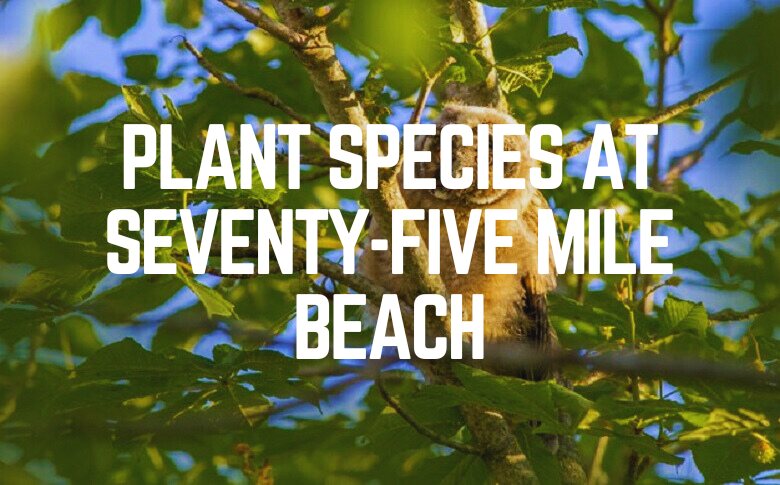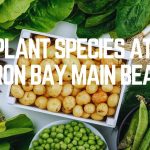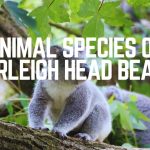Plant Species At Seventy-Five Mile Beach on Fraser Island boasts a unique variety of coastal flora. Versatile plants, including pandanus palms and tough hill grasses, thrive along the sandy shores.
These hearty species add to the ocean side’s aesthetic charm while playing a vital role in stabilizing the dunes and supporting the neighborhood’s biological system.
Against the backdrop of the Pacific Ocean, 75 Mile Beach’s plant variety causes a beautiful situation, inviting visitors to appreciate the rich biodiversity that complements the rough magnificence of this iconic Australian sand highway. Nature and adventure harmonize consistently at Seventy-Five Mile Beach.
Plant Species Present At Seventy-Five Mile Beach
- Beach Aster
- Scurvy Weed
- Beach Flannel Flower
- Seashore Amaranth
- Beach Bean
- Beach Primrose
- Beach Saltbush
- Coastal Spinifex
- Pigface
- Beach Spinifex
- Pandanus Palm
- Beach Morning Glory
- Beach Vitex
- Beach Almond
- Beach Sheoak
- Beach Dropseed
- Beach Banana
- Beach Cabbage
- Beach Goldenrod
- Beach Naupaka
Beach Aster
The Beach Aster, with its daisy-like sprouts, graces the shores of Seventy-Five Mile Beach, adding vibrant splashes of color to the coastal landscape. Its salt-tolerant nature permits it to flourish in the ocean-side climate, adding to the area’s botanical variety.
Scurvy Weed
Scurvy Weed, known for its therapeutic properties and particular yellow blossoms, is a common coastal plant along Seventy-Five Mile Beach. Historically recognized for its vitamin C content, this plant assumes a part in the biological embroidery of the ocean side, providing both beauty and potential health benefits.
Beach Flannel Flower
The delicate blooms of the Beach Flannel Flower carry a delicate and exquisite touch to Seventy-Five Mile Beach. With its distinctive flannel-like texture, this waterfront wildflower adds to the visual allure of the ocean side, attracting pollinators and contributing to the local ecosystem.
Seashore Amaranth
Seashore Amaranth, a hardy coastal plant, is very much adjusted to the powerful states of Seventy-Five Mile Beach. Its succulent leaves and small flowers make it a resilient species, assuming a part in settling the sandy rises and forestalling disintegration.
Beach Bean
Beach Bean, with its rambling plants and energetic purple blossoms, is a notable feature of the beach flora. Its capacity to endure sandy soils and saline circumstances adds to the overall biodiversity of Seventy-Five Mile Beach.
Beach Primrose
Beach Primrose, portrayed by its radiant yellow blossoms, is a waterfront wildflower that flourishes along Seventy-Five Mile Beach. Its presence adds a cheerful and colorful element to the beach landscape, upgrading the visual experience for beachgoers.
Beach Saltbush
Beach Saltbush, a versatile waterfront bush, is appropriate to the aromatic and sandy climate of Seventy-Five Mile Beach. Its greyish-green foliage and adaptability make it a key player in the stabilization of coastal soils, supporting the ocean-side biological system.
Coastal Spinifex
Coastal Spinifex, a grass species with tough, spiky leaves, assumes an urgent part in balancing out ridges along Seventy-Five Mile Beach. Its extensive root system helps prevent erosion, making it a significant part of the ocean-side biological system.
Pigface
Pigface, with its plump leaves and beautiful blossoms, is a typical delicious along Seventy-Five Mile Beach. Its ability to thrive in sandy soils and endure waterfront twists adds to the versatility of the ocean-side vegetation.
Beach Spinifex
Beach Spinifex, a solid grass animal group, is essential to the ridge adjustment endeavors along Seventy-Five Mile Beach. Its tufted growth pattern and deep root system assist in preventing sand erosion and keeping up with the trustworthiness of the waterfront scene
Pandanus Palm
The iconic Pandanus Palm graces Seventy-Five Mile Beach with its unmistakable group of long, spiky leaves. Offering both shade and a touch of tropical allure, this palm is an unmistakable component along the coastline, contributing to the beach’s aesthetic appeal and giving an environment for local wildlife.
Beach Morning Glory
Beach Morning Glory, with its trumpet-formed blossoms, adds an explosion of variety to the sandy scene. This trailing vine, adapted to coastal conditions, weaves its way along the beach, improving the visual appeal of Seventy-Five Mile Beach and attracting pollinators.
Beach Vitex
Beach Vitex, perceived for its sweet-smelling leaves and groups of purple blossoms, is a fragrant addition to the beach flora. Thriving in the sandy soils contributes to Seventy-Five Mile Beach’s overall biodiversity and gives beachgoers a magnificent olfactory encounter.
Beach Almond
Beach Almond, with its shiny green leaves and particular organic products, is a strong waterfront tree lining Seventy-Five Mile Beach. Known for its tolerance to salt spray, it assumes an imperative part in settling ridges and giving a natural barrier against erosion.
Beach Sheoak
Beach Sheoak, a thin and upstanding tree, graces the shores of 75 Mile Oceanside. With its needle-like leaves and unique cones, this species is adjusted to seaside conditions, contributing to the beach ecosystem’s overall resilience.
Beach Dropseed
Beach Dropseed, a grass animal group appropriate to sandy conditions, adds texture and greenery to the beach landscape. Its sensitive seed heads influence the seaside breeze, making a dynamic and visually appealing element along Seventy-Five Mile Beach.
Beach Banana
Beach Banana, an unmistakable waterfront bush, stands apart with its enormous, paddle-formed leaves. Growing in clusters, it adds a tropical touch to Seventy-Five Mile Beach, adding to the different exhibits of vegetation that flourish in the ocean-side climate.
Beach Cabbage
Beach Cabbage, with its rosette of thick, plump leaves, is a solid delicious that dabs the sandy stretches of Seventy-Five Mile Beach. Its ability to store water allows it to withstand coastal conditions, adding to the general strength of the ocean-side biological system.
Beach Goldenrod
Beach Goldenrod, with its energetic yellow blossoms, is a sun-cherishing plant that lights up Seventy-Five Mile Beach. This coastal wildflower not only adds color to the landscape but also provides nectar for pollinators, supporting the nearby environment.
Beach Naupaka
Beach Naupaka, known for its particular half-blossoms, flourishes along Seventy-Five Mile Beach. Its salt resistance and beachside transformation make it a strong part of the seaside vegetation, contributing to the overall beauty and ecological balance of the beach environment.
In Summary
Seventy-Five Mile Beach’s coastal flora, highlighting pandanus palms and tough ridge grasses, adds a rough appeal. The vibrant plant life enhances the beach’s aesthetic, mixing flawlessly with the sandy scene and Pacific Ocean views. Each visit is an adventure, where the normal magnificence of Seventy-Five Mile Beach and its diverse plant species make a vivid encounter on Fraser Island.
Frequently Asked Questions (FAQs)
Q: What types of plants thrive at Seventy-Five Mile Beach?
Resilient coastal flora includes pandanus palms and hardy dune grasses, enhancing the beach’s allure and ecological stability.
Q: Are these plants unique to Seventy-Five Mile Beach?
While found in coastal areas, they contribute to Seventy-Five Mile Beach’s distinctive and varied ecosystem.
Q: Do the plants serve a specific ecological purpose?
Yes, they stabilize dunes, prevent erosion, and provide habitats for local wildlife along Fraser Island’s eastern shore.
Q: How do these plants enhance Seventy-Five Mile Beach’s aesthetic?
Their vibrant colors and diverse forms create a picturesque and visually appealing landscape along the Pacific Ocean.
Q: Are these plants part of guided tours or conservation efforts?
Conservation efforts focus on preserving the natural ecosystem, and guided tours often highlight Seventy-Five Mile Beach’s unique coastal plant variety.


